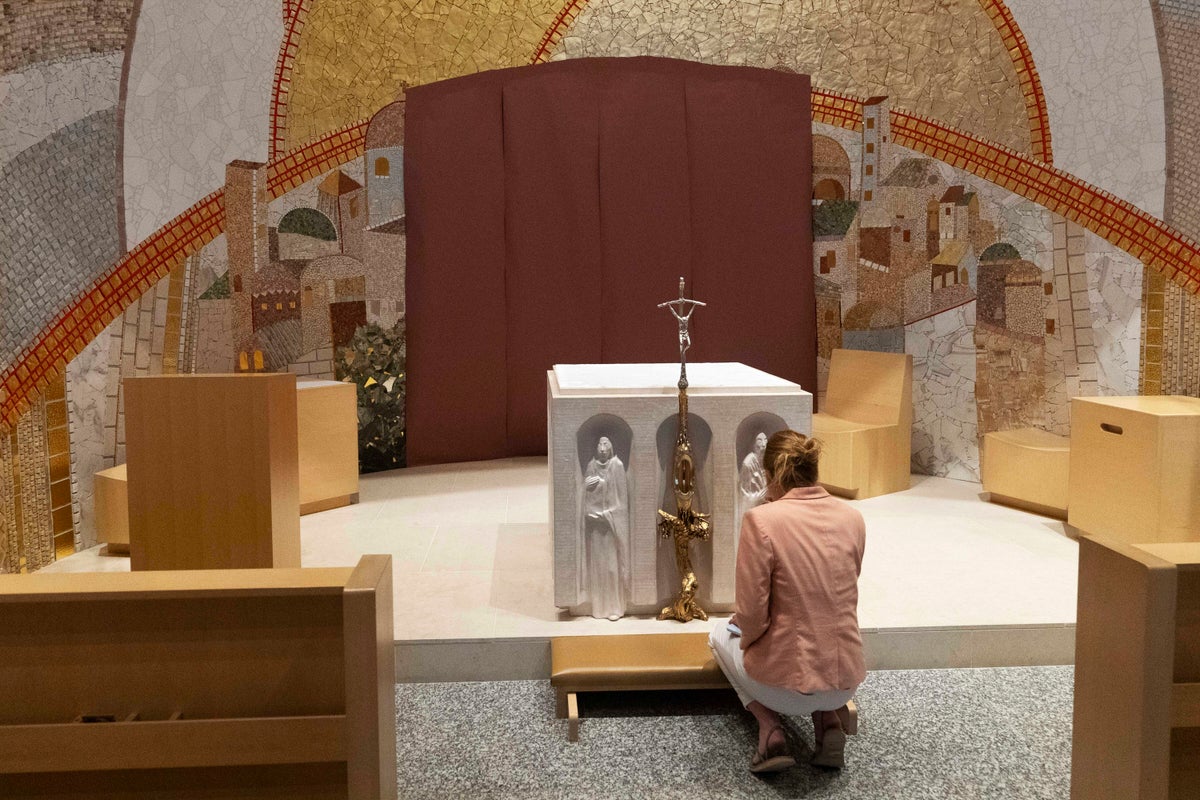
Support truly
independent journalism
The Knights of Columbus, the world’s largest Catholic fraternal group, has covered up defining features of the mosaics in its Washington D.C. shrine after the famous ex-Jesuit artist who designed them was accused of abusing women.
The influential Catholic charitable organization announced earlier this month that it was covering the works as a sign of solidarity with victims of abuse since they “may be further injured by the ongoing display of the mosaics at the shrine.” For now, it is being covered with paper, but as soon as possible, it will be completely covered with fabric that is appropriate for a worship space, according to the Knights of Columbus.
The Rev. Marko Rupnik’s mosaics depicting biblical scenes, saints and the Virgin Mary grace some of the most important and visited Catholic basilicas and sanctuaries around the world. But he has been accused by more than 20 women of psychological, spiritual and sexual abuse, prompting questions about what to do with his artwork.
The Knights’ announcement that they were going to cover them up marked the first such move by a major church, organization or diocese. They said they would cover the mosaics at its Saint John Paul II National Shrine in Washington and chapel at its New Haven, Connecticut, headquarters initially in paper, until the custom-made fabric draping that has been ordered arrives. A permanent plaster covering “may be in order,” depending on the outcome of the Vatican’s investigation into Rupnik, the Knights said.
The scandal about Rupnik’s alleged abuse has grown steadily, and implicated Pope Francis, since the Vatican and his Jesuit order long ignored the women’s complaints until their stories were published in late 2022 in Italian blogs and newspapers.
One of the women who says Rupnik abused her, Gloria Branciani, said she struggled over her ultimate decision to ask that Rupnik’s mosaics be removed, since she knew so many artists worked on them beyond the Slovene priest.
“What made me take this decision with peace and tranquility was learning that an artist was abused by Rupnik precisely as he worked, precisely as his hands created the scenes of salvation,” she told the Associated Press last month in Rome. “And for me this was so important: I realized that it wasn’t right to keep these works — works that at their origin had negative energy, energy of abuse — where people go to pray.”
The Jesuits expelled Rupnik from the order last year, and Pope Francis ordered a new canonical trial against him following an outcry that his victims hadn’t received justice and suspicions that he had received favorable treatment.
Rupnik hasn’t responded to the allegations and refused to cooperate with an investigation by his former order, which determined that the women’s claims against him were “very highly credible.” His collaborators have denounced what they called a media “lynching” against him.
___
Winfield reported from New York City.







